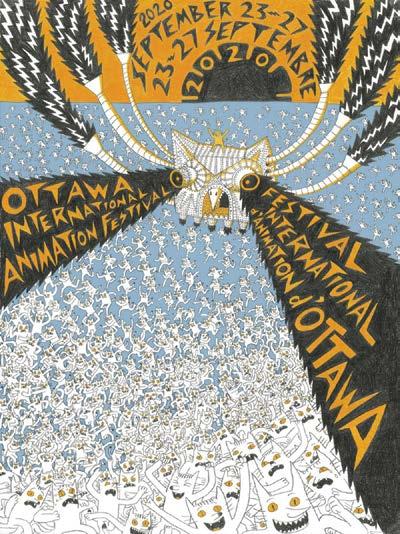previous page
TOC
F eatures
Ilze Burkovska Jacobsen
Ode to a Latvian Childhood Ilze Burkovska Jacobsen discusses the inspirations for and challenges of her award-winning animated feature My Favorite War. By Ramin Zahed
O
ver the past decade, fans of world cinema have seen several creative auteurs use animation to tell stories that deal with serious issues and explore tough socio-political themes. This year, Latvian-Norwegian director Ilze Burkovska Jacobsen continues that tradition with My Favorite War, a powerful look at her own experience growing up under Soviet rule and how that political climate impacted her own coming of age. During a recent interview, Burkovska Jacobsen talked to us about the making of her movie, which took home the prestigious Contrechamp prize at Annecy in June. The title is also selected as one of the features in competition at the Ottawa International Animation Festival this month. “Two of my key cinematic sources of inspiration are Marjane Satrapi’s Persepolis and Ari Folman’s Waltz with Bashir,” says Burkovska Jacobsen. “Both films tell about history, use animation and still are classified as documentaries. My inspiration art-wise was Frida Kahlo. In the beginning, when I started to raise money www.animationmagazine.net
TOC
for my film, I was kind of embarrassed that I was using myself in the story. But then I thought of Frida Kahlo and thought, well, we see images of her face and body in her paintings, but she tells the larger story anyway. We see pain, longing, love, accusation and a statement of female strength in her paintings, not the self-satisfied face of the painter. So I decided then that it was
possible to use yourself in a film even though it felt very uncomfortable at times.” She adds, “Of course, in terms of the film’s storyline, I was inspired by the tremendously dramatic history of my homeland Latvia, with all the
6
tragic twists during the last century and the ‘happy ending’ from our perspective of the Cold War.”
Mixing Reality with Animation The filmmaker says there were various reasons she decided to combine animation with live-action and archival footage and photos. “That was the only way for me to visualize the story the way I wanted to tell it,” she explains. “To make a live-action fiction movie would be too expensive. There are also no archives or photos of the situations or happenings of what I wanted to show in my film.” Burkovska Jacobsen began her work on the movie’s script about nine years ago. The film’s concept artist began contributing drawings for the film that same year. However, actual development didn’t start until 2014, and production began late in 2016. The team used cut-out animation in combination with some 3D and a little bit of hand-drawn animation for the opening scene of the movie. According to the director, the team had five september|october 20
previous page
















